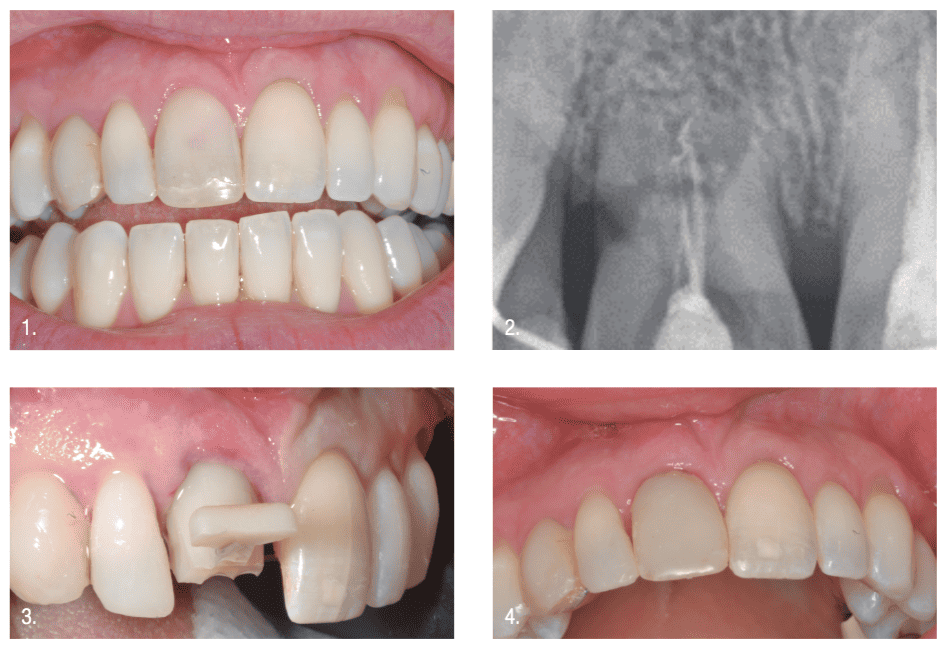Editor’s intro: To preserve and protect the gingival emergence profile, GCL Systems™ developed the Gingival Cuff Links System. Read all about the benefits here.
Preserving and perfecting the gingival emergence profile
Dental implants have changed the face of dentistry as much as any other technology. Since the discovery of osseointegration and the development of the dental implant, millions of lives have been enhanced with the ability to chew food and function in a way that was not previously available. Significant implant research and development have been undertaken to allow bone to integrate more quickly and effectively. Despite achieving this very high level of success, the predictability of maintaining and establishing the ideal soft tissue emergence profile has resulted in less than acceptable esthetic outcomes.


Traditional implant soft tissue management has been with round healing cuffs/abutments, but ironically, there are no round teeth. The importance of gingival tissue manipulation to establish an ideal emergence profile has been discussed for years, and many techniques have been proposed or developed but fallen short of the goal of predictably preserving and perfecting gingival tissue. The shortfalls of the alternative approaches and devices arise from the failure to satisfy three key elements required of an ideal solution: adaptability, durability, and dependability. The Gingival Cuff Links System™ was developed to meet all three elements.
 Each Gingival Cuff Link™ core abutment is made of titanium specifically designed to fit with the implant manufacturer’s implant design. The Gingival Cuff Link™ body is made of bisacrylic resin, which is the same material from which many temporary dental restorations are fabricated and can be easily sculpted by reduction using dental rotary instrumentation or by addition using flowable composite or bisacrylic. The body is molded to 11 different emergence profiles to assist in establishing and maintaining a natural soft tissue emergence for every tooth. The Gingival Cuff Links System™ has been used in hundreds of cases, in all areas of the mouth, and at all stages of the implant process (immediate and delayed). In all cases, the Gingival Cuff Link was either customized as a healing cuff and/or a provisional crown.
Each Gingival Cuff Link™ core abutment is made of titanium specifically designed to fit with the implant manufacturer’s implant design. The Gingival Cuff Link™ body is made of bisacrylic resin, which is the same material from which many temporary dental restorations are fabricated and can be easily sculpted by reduction using dental rotary instrumentation or by addition using flowable composite or bisacrylic. The body is molded to 11 different emergence profiles to assist in establishing and maintaining a natural soft tissue emergence for every tooth. The Gingival Cuff Links System™ has been used in hundreds of cases, in all areas of the mouth, and at all stages of the implant process (immediate and delayed). In all cases, the Gingival Cuff Link was either customized as a healing cuff and/or a provisional crown.
Clinical case
This patient presented with advanced resorption of the root of tooth No. 8 with resultant significant mobility and discoloration. Removal of the tooth was done, and the site addressed with immediate implant placement and provisionalization using the Gingival Cuff Links System™.
Results
The immediately placed implant soft tissue emergence profile was able to be maintained or enhanced in the nearly all cases using the Gingival Cuff Links System™ either as a gingival healing cuff or a provisional crown. In delayed or second-stage surgery protocols, emergence-profile maintenance with Gingival Cuff Links was superior to round healing caps; however, some gingival recontouring using flap procedures was necessary affecting healing times and predictability relative to immediate protocols. When multiple implants were placed adjacent to each other, the ability to maintain the interproximal papilla was predictable with immediate implant and provisional crown or customized-healing cuff placement. In all situations, the results were substantially better for each member of the implant team (surgeon, restorative dentist, laboratory technician, patient) than using the traditional method of a round healing abutment.
This information was provided by GCL Systems
For more information on achieving a proper gingival emergence profile read, “Treatment planning of implants in the esthetic zone: part 1” here.
Stay Relevant With Implant Practice US
Join our email list for CE courses and webinars, articles and mores



